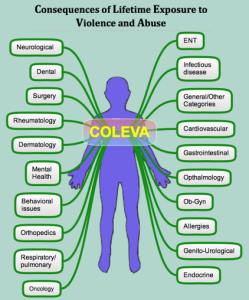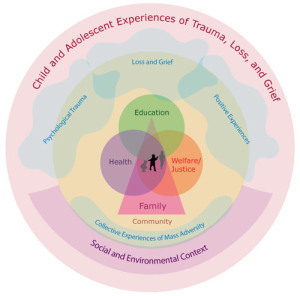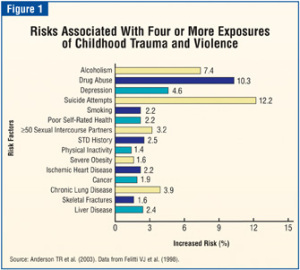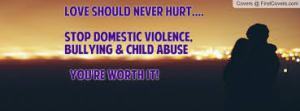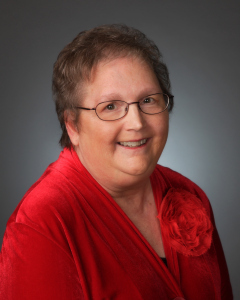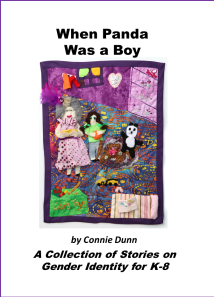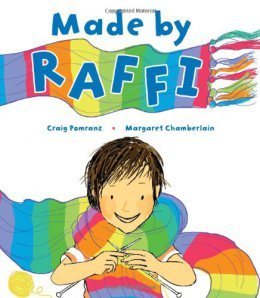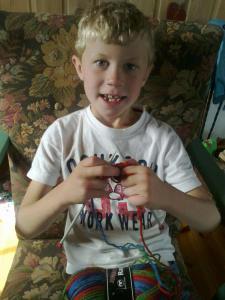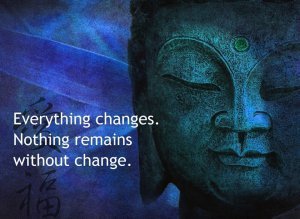Sally Ember's Blog, page 106
August 2, 2014
The ‘Gypsy’ film with Barbra Streisand might still be happening after all
For @Mario Cossa and many other fans: Barbra as Mama Rose!
 Originally posted on Inside Movies:
Originally posted on Inside Movies:
[ew_image url="http://img2.timeinc.net/ew/i/2014/08/..." credit="Kevin Winter/Getty Images" align="left"]
Here she is, boys; here she is, world… here’s Barbra! Well, maybe.
After years in development, it looks like a new film adaptation of the musical Gypsy is back on track with Barbra Streisand potentially directing herself as Mama Rose. Universal has now reportedly hired Richard LaGravenese to write a new script for the musical by Jule Styne, Arthur Laurents, and Stephen Sondheim, a smart move for the studio. LaGravenese worked with Streisand before, on 1996′s The Mirror Has Two Faces, and wrote HBO’s splashy Liberace biopic Behind theCandelabra. He also recently finished directing his film adaptation of Jason Robert Brown’s musical The Last Five Years starring Anna Kendrick and Jeremy Jordan. Actually, those two actors would be a great choice to play Louise and Tulsa respectively, but let’s not get ahead of ourselves.
Downton Abbey‘s Julian Fellowes had been hired by the…
View original 138 more words
Filed under: Writing







Proven, Long-term Effects on Physical Health of those who suffered childhood Trauma, Abuse, Neglect and Bullying
In case you’ve been unaware of the last several years of research from all over the world, with children, adolescents and adults, some after 40 years since the trauma, they all come to the same conclusions: those who suffer childhood trauma, whether through abuse, neglect, witnessing domestic or neighborhood violence or being bullied by siblings or peers, have observable, lifelong negative consequences to not only our psychological but to our physical health. Traumas include war and threats of warlike activity, sudden natural disasters, neighborhood or school-site gang warfare and violent encounters of other types that children and teens experience, even if “only” as witnesses.
image from http://www.acestoohigh.com
Is there any “good news”? Only a bit.
When responsible adults who have the power to act curtail or stop the abuse or trauma early on, some of the effects may be reversible.
If adults whom the victim/survivor encounters treat the traumatized child, teen or adult consistently and appropriately by supplying effective psychological therapy and immediate environmental improvements, an almost-complete recovery is possible.
When the child reports the bullying or abuse or reveals that domestic violence or parental neglect is occurring and the listening adults immediately take the child’s reports seriously followed by taking obvious supportive, preventive and/or protective actions, these responses also improve the child’s chances of developing fewer problems later in life.
Links to some of the research articles recently published are below. My favorite points are in this post. Thanks to all the researchers, reporters/journalists and participants in these studies who made these understandings possible.
May all abuse, neglect, bullying, domestic violence and other causes of childhood trauma CEASE in our lifetimes. May all children grow up and be educated in safe, healthy environments.
image from http://www.earlytraumagrief.anu.edu.au
Sources and quotes:
I. Abuse Casts a Long Shadow by Changing Children’s Genes
By Eleanor Nelsen
July 2014
“For abused children, that trauma is just the beginning. Most will likely struggle well into adulthood.”
image from http://www.ascd.org
“Living with an abusive parent has increased their risk for depression and other psychological problems while decreasing their chances of successfully maintaining close relationships. Even physical ailments, like type 2 diabetes and heart disease, are more likely in adults who were abused as kids. Early abusive experiences can leave a stubborn imprint on those children’s brains and bodies, and Seth Pollak, a professor at the University of Wisconsin and head of the study, wanted to know how, exactly, abuse was changing these children’s bodies on a cellular level.”
“… people’s experiences exert a strong influence on their biology by silencing genes or turning them back on, significantly changing the way a cell functions without changing its DNA sequence. It’s a phenomenon known as epigenetics.”
“’Epigenetics makes the genes tick,’ explains Moshe Szyf, a professor of genetics and pharmacology at McGill University. Epigenetic changes modify DNA to keep genes from being expressed, and they can explain dramatic differences between cells with identical DNA—for example, how stem cells can turn into either liver cells or heart cells, or why only one of a set of identical twins gets cancer. It’s also, Pollak found, why children who grow up in abusive homes have physical and psychological problems that haunt them well into adulthood.”
“‘… something like parenting, parental care, was flipping the switch.’… trauma might be turning this stress-management gene off…”
“…for children in abusive homes, who are in threatening situations every day, having more cortisol floating around isn’t necessarily bad—at first. ‘You may need to remain vigilant more often. You may need to flip into vigilant state more easily. That’s keeping you alive under harsh conditions, but it’s also making it really hard for you to function.’”
“…The long-term results are the chronic psychological problems like anxiety and depression and chronic physical problems like heart disease and type II diabetes, which often surface years later in victims of childhood abuse.”
“… Having too few receptors for cortisol keeps the immune system from learning to manage inflammation and infections, helping explain why children in abusive homes seem to get sick more often, and are at a higher risk for chronic health problems.”
“’The idea that these things aren’t fixed is really encouraging,’ Pollak says.”
II. Bullying affects children’s long-term health, study shows
February 2014
http://www.medicalnewstoday.com/articles/272762.php
“In the first study of its kind to assess the compounding effects of bullying over 5 years, researchers have found that a child experiences more severe and lasting health implications the longer he or she is bullied, suggesting that early interventions could reverse the “downward health trajectory” that victims of bullying may experience.”
“At any age, bullying was linked with worse mental and physical health, more depressive symptoms and a lower sense of self-worth. And students who reported chronic bullying also experienced more difficulties with physical activities like walking, running or playing sports.”
“‘Our research shows that long-term bullying has a severe impact on child’s overall health, and that its negative effects can accumulate and get worse with time,’ says Bogart.”
“She calls for more intervention around bullying, ‘because the sooner we stop a child from being bullied, the less likely bullying is to have a lasting, damaging effect on his or her health down the road,’ she adds.”
“…recent events may be more important than distant ones to a child’s health, but the team notes that health consequences “compound over time” and may stay even after the bullying has ceased.”
“… their findings emphasize the importance of stopping bullying early and continuously intervening to help with the lingering effects.”
Sally Ember wholeheartedly recommends the nonprofit USA-based organization, Community Matters, for their advising and trainings for improving school climate through research-based and clinically-proven effective bullying prevention and education programs, “Safe School Ambassadors,” for youth, school staff and parents.
Contact them (they offer programs around the world): 707-823-6159 or http://www.community-matters.org
“Medical News Today reported on a 2013 study published in the journal Psychological Science, which suggested victims of childhood bullying fare poorly in adulthood. Findings from the study showed that individuals bullied in childhood were more likely to have a psychiatric disorder, smoke, struggle to keep work and had difficulty maintaining friendships.”
III. BULLYING BY SIBLINGS ANYTHING BUT HARMLESS
compiled in 2013
While other forms of bullying are commonly taken seriously and relatively well-researched, bullying between siblings often gets ignored or minimized. However, two recent studies call attention to the potential pitfalls of discounting the effects of sibling bullying. One of these studies indicates that children who bully their brothers or sisters take this activity less seriously than other bullying behaviors, while the other study indicates that sibling bullying can cause just as much mental health harm as other forms of bullying.
image from http://www.psychiatrictimes.com
“…childhood bullying substantially increases the chances that an individual will develop a diagnosable mental illness during adulthood. These same risks also apply in magnified form to bully-victims, a term used to describe bullying victims who go on to perpetrate acts of bullying on others.”
“… more siblings (85 percent) actually identify themselves as bullies than as bullying victims (75 percent)….[T]his finding points toward a widespread childhood acceptance of sibling bullying as a non-consequential behavior that has no meaningful impact on the well-being of affected individuals. This acceptance also almost certainly reflects the attitudes of the larger culture toward the seriousness of sibling bullying.”
“…both relatively moderate and relatively severe bullying produce a decline in mental health marked by things such as anxiety, depressed moods and uncontrolled outbursts of anger. Moderate physical bullying by a sibling has a greater mental health effect on younger children than on older children. However, the authors found that all other forms of sibling bullying have an equally negative effect on both younger children and teenagers.”
“… current social tendencies to downplay or dismiss the importance of sibling bullying contribute to the problem and seriously increase the chances that sibling bullying and other forms of bullying will continue to diminish the psychological/emotional well-being of large numbers of individuals.”
“…pediatricians can help decrease the impact of sibling bullying by looking for signs of such bullying in their patients on an annual basis.”
IV. The neurobiological effects of childhood maltreatment: An often overlooked narrative related to the long-term effects of early childhood trauma?
by Jennifer Delima and Graham Vimpani
http://www.aifs.gov.au/institute/pubs/fm2011/fm89/fm89e.html
“… some current societal dysfunction may well be an overlooked significant consequence of childhood maltreatment, with its associated trauma effect upon the developing brain. These changes prevent and impair the ability to remediate disadvantage and its effects through purely social policy and justice measures.”
Acts of commission (actions against the child)
Physical- The child is subject to disciplinary action by his/her caregiver(s), with resultant bruising, severe pain, temporary loss of mobility, scars, burns, shaking etc. This may lead in some cases to more serious and life-threatening injuries, including inflicted brain injury.
Sexual – This involves the sexual abuse or exploitation of the child and /or exposing them to sexual acts.
Emotional – The child is subject to repeated verbal abuse, being sworn at or receiving hurtful and demeaning comments about his/herself. This form of maltreatment also includes the child hearing about violent acts perpetrated upon a significant attachment figure for the child.Acts of omission
(actions of failed care)
Witnessing family violence – The child hears or watches aggressive verbal altercations and/or physical violence.
Neglect - This type of maltreatment ranges from failing to provide basic food, shelter, clothing and care (including relevant medical care) to exposure to harmful substances. This is often labelled as “environmental circumstance”, but studies of documented behavioural features and neuro-imaging tests demonstrate that the resultant brain injury patterns are similar to those seen in children exposed to acknowledged trauma and maltreatment.
Sources: Chrousos & Gold (1992); De Bellis (2002); MacMillan et al. (2009)
“Neglectful acts have also been extended to include the exposure of children to cigarette smoke when they are motor vehicle passengers, although this does not yet apply to the unborn foetus. Exposing foetuses to harmful agents (teratogens) could also be regarded as neglectful when there is a known causal relationship between the substance and resultant structural malformations to the developing foetus (e.g., continued thalidomide use despite knowledge of its effect on foetal limb growth, or continued alcohol use with knowledge of its causality in foetal alcohol spectrum disorder). Such actions are neglectful regardless of the intent of the child’s parent, caregiver or other responsible adults.”
“The common factors in trauma or maltreatment that adversely affect early brain development appear to be those events and conditions in which the child experiences or repeatedly experiences, in a prolonged and uncontrolled manner, circumstances that they perceive as being likely to be significantly life threatening for themselves.”
They can use “non-invasive static-scan neuro-imaging tools, such as MRI (magnetic resonance imaging), DTI (diffusion tensor imaging) and SPECT (single-photon emission computed tomography). More recently, assessment with ‘functional MRI’ (fMRI) has provided even further evidence of the impact that maltreatment has upon a child’s brain, including the assessment of not only structural changes but also the dynamic processes occurring within the brain as the child recalls or listens to an account of the varying types of maltreatment to which they have been previously exposed.”
“Maltreatment that comprises severe, prolonged and uncontrolled life stressors activates a prolonged biological stress response. This response is mediated through the limbic-hypothalamic-pituitary-adrenal axis, a system that describes the brain’s interaction with the peripheral body through neural (sympathetic nervous system) and hormonal (adrenal gland) tissues that regulate the body’s response to perceived longer acting stressors (infection, trauma, neglect, substance exposure, etc.).”
“The developing brain is particularly vulnerable to stress, especially with respect to the pre-frontal cortex, hippocampus and corpus callosum. Through prolonged activation of the biological stress response system, structural and functional brain changes occur. The behaviours resulting from chronic stress include poor self-regulation, increased impulsive behaviours, and emotional responses such as high levels of experienced anxiety, aggression and suicidal tendencies and, in some, a learned helplessness from the constant impairment of self-regulation.”
“…the response to chronic stress impairs the function of noradrenaline and dopamine within the limbic system and that this may account for the typical post-traumatic stress disorder (PTSD) symptoms of persistent hyper-arousal and hyper-vigilance that continues to occur after the trauma, despite resolution of the initiating experience. These neurotransmitters also interact with the serotonin system to modify mood and anxiety symptoms.”
“The impact of maltreatment on the brain – structural, functional and behavioural – has been shown to worsen the longer the duration of trauma experience and the younger the age of onset of the trauma experience.”
Substance misuse and dependence
“Early onset adult depressive, suicidal and personality disorders have also been shown to be significantly increased in those with documented histories of childhood maltreatment….This has been postulated to be the outcome of cortisol hyper-secretion.”
“… ‘antisocial’ personality disorder is a more frequent occurrence in those with a history of physical abuse and/or neglect, whereas “borderline” personality disorder is more frequently associated with childhood sexual abuse.”
“Cognitive development and academic performance are also adversely affected by childhood exposure to violence. MRI studies show that exposure to violence is associated with children having smaller intracranial, cerebral and prefrontal cortex volumes, with particular effects on prefrontal white matter, temporal lobe volumes and the corpus callosum….these children have been found to suffer increased levels of depression, dissociation and both externalising (aggression, self-harming) and internalising (depression, anxiety) symptoms.”
“…male children are more vulnerable to the consequences of maltreatment, and this is reflected in changed brain structure….The corpus callosum volume in males is especially decreased in the isthmus region of the corpus callosum, which appears to facilitate more externalising behavioural symptoms of aggression and suicidality.”
“A similar decrease in volume is noted in the superior temporal gyrus and hippocampus, with a resultant observed deficit in executive function ability and sustained attention and focus, a limited verbal response ability, and poor short-term memory and capacity for future planning. Also observed has been a decreased ability to learn through both motor and non-motor means. Further, the cerebellum is generally decreased in volume in these children, with an observed attendant behavioural pattern of having difficulty sleeping, poor concentration and general irritability.”
“Maltreatment in early childhood has also been shown to result in adverse adult onset physical health; in particular, chronic disease and reproductive and adult sexual health problems….childhood abuse and exposure to domestic violence can lead to numerous differences in the structure and physiology of the brain, which affect multiple human functions and behaviours.”
“…not all children are adversely affected in this way. Some of this resilience may be attributed to the ‘neuroplasticity’ of the brain; that is, the ability of neural tissue to modify brain function and response, so enabling a different response to an experienced memory. Neuroplasticity occurs as a result of some synaptic pathways being enhanced rather than others following activities that stimulate specific sensory, motor and language development. This is especially seen in children under the age of 7 years and continues to a lesser degree into the mid-teenage years, but it decreases significantly around the third decade of life, when the brain has reached maturity with completed myelination.”
“…appropriate and early remedial therapy provided to children who have suffered maltreatment (either in utero, or during their childhood), may mitigate many of the adverse behavioural, learning and cognitive effects of the maltreatment.”
“Early identification of such affected children would permit the implementation of remedial social supports, education and behavioural treatment measures to enhance the modifying mechanism of neuroplasticity to reduce the functional neurobiological effects of child maltreatment. Additionally, early modification of the child’s environment to decrease the biological stress response may also assist the expression of the child’s genetic make-up (epigenetics).”
“Elevated cortisol biological stress responses in children and adolescents reflect the prolonged stimulation of the hypothalamic-pituitary-adrenal axis, which normally is an acute stress response system. This prolonged stimulation in turn adversely affects physical and mental health and wellbeing, resulting in conditions such as reduced immune function, cardiovascular disease, dysthymia (persistent mild depression), major depression, oppositional defiant disorder and attention deficit hyperactivity disorder (ADHD). Furthermore, persistent exposure to stress results in damped responsiveness to new stressors.”
“…females tend to express their responses to maltreatment through internalising symptoms such as depression, anxiety and eating disorders, compared to males, who express themselves more through externalising symptoms such as aggression, harm directed at others and suicidality.”
” [However], the younger child tends to display a similar level of distress regardless of the magnitude of stress to which they are responding.”
“…not all children are adversely affected by maltreatment, and this is hypothesised to reflect their access to appropriate environmental and familial supports at the time of the event. Additionally, differential epigenetic responses to environmental circumstances may also play a part. If the biological stress response is rapidly curtailed through appropriate support, and safety and security measures are instigated, then structural changes within the developing child’s brain are likely to be minimised, along with the adverse behavioural consequences.”
“The effects of maltreatment on children extend further than the children and their respective families to affect the wider community. The learning and cognitive deficits observed in these children are then reflected in their poorer educational and life skills development, particularly their capacity for self-regulation. This in turn affects the community’s ability to control violence and ensure an environment that promotes individual safety.”
“Child maltreatment eventually also affects the broader society with which the child’s community articulates. When adults in these communities have also been affected in their own childhoods by significant and chronic maltreatment, and witnessed or experienced personal, family and community violence, as well as engaging in chronic alcohol misuse, the intergenerational “cycle of poverty and community dysfunction” continues; the adults who would normally be responsible for providing the leadership, supervision and caring roles are themselves limited by their own reduced cognitive capacity and executive function ability.”
“Identification of these children through early and appropriate screening … and targeted remedial treatment has the potential to mitigate some of the cognitive, learning and behavioural difficulties that may arise, such as poor literacy, unemployment, incarceration, childhood pregnancy, or substance dependence.”
“Where brain injury results from maltreatment, current social and justice strategies, often introduced relatively late in the individual’s life, are by themselves of little benefit in achieving remediation, as the damage to neuropsychological functioning may be too entrenched to be overcome. This is especially so as most of the remedial programs available commence after the age of 7 years, thus missing the most sensitive ‘neuroplastic developmental’ period.”
“Providing a safe environment for children and their families will enable the next generation of children to achieve their maximum adult potential through normal neurobiological development.”
V. Impact of childhood bullying still evident after 40 years
April 2014
This study was funded by the British Academy and the Royal Society.
“Dr. Ryu Takizawa, lead author of the paper from the Institute of Psychiatry at King’s College London, says: ‘Our study shows that the effects of bullying are still visible nearly four decades later. The impact of bullying is persistent and pervasive, with health, social and economic consequences lasting well into adulthood.’”
“Individuals who were bullied in childhood were more likely to have poorer physical and psychological health and cognitive functioning at age 50. Individuals who were frequently bullied in childhood were at an increased risk of depression, anxiety disorders, and suicidal thoughts.”
image from http://www.firstcovers.com
“Individuals who were bullied in childhood were also more likely to have lower educational levels, with men who were bullied more likely to be unemployed and earn less. Social relationships and well-being were also affected. Individuals who had been bullied were less likely to be in a relationship, to have good social support, and were more likely to report lower quality of life and life satisfaction.”
“…’what happens in the school playground can have long-term repercussions for children. Programmes to stop bullying are extremely important, but we also need to focus our efforts on early intervention to prevent potential problems persisting into adolescence and adulthood.’”
Filed under: Life lessons, Opinions, Personal stories, Science Tagged: abuse, bullying, childhood trauma, health, neglect, research, science







August 1, 2014
Interesting Spec Fic Markets for August and Beyond!
#SpecFic #Authors: chances to earn money for your writing! Thanks for sharing, Chris White!
 Originally posted on chris white writes:
Originally posted on chris white writes:
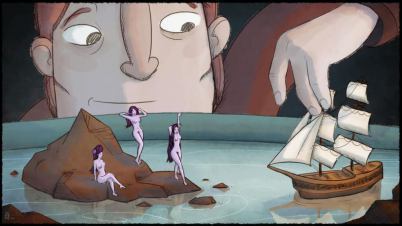
Toy Shop (Sirens) – Simon Cottee, for The Lane of Unusual Traders
Just some interesting speculative fiction markets I’ve come across this month, with a deadline sometime this month – I thought it’d be nice to share. All of these markets are pro-paying, by the way, unless I mention otherwise:
The Lane of Unusual Traders (Short Story component 1500 – 3000 words) – Tiny Owl Workshop, 31st August
The Lane of Unusual Traders is a world building project. The aim is to write or otherwise bring the Lane, the City of Lind and the world of Midlfell into existence through stories, illustrations, comics and, well, through whatever other creative means present themselves as the story grows.
The story begins in a lane known only as The Lane of Unusual Traders.
The Journal of Unlikely Cryptography (less than 5000 words) - Unlikely Story, November 1
Genre isn’t particularly important to us—speculative, mainstream…
View original 336 more words
Filed under: Writing







“Would I rather…? or…?” We had such a rollicking good time! Listen to Sally Ember’s on-air Author Interview!
Catch Sally Ember’s #Author #Interview with the funny and insightful Scarlett and Nathan from the UK on their amusing, informative, unique site, Intertainment Hub, on their Youtube channel.
The interview (audio only) goes live on 8/2/14.
http://www.youtube.com/intertainmenthub
Intertainment Hub’s logo
Please listen, then comment there and here! Thanks!
Filed under: Interviews with Sally as Author Tagged: aliens, Author Interview, Sally Ember, sci-fi, The Spanners Series, This Changes Everything, This Changes My Family and My Life Forever







July 30, 2014
global meditation for peace
Global #Meditation for #Peace! 8/8/14 noon EST USA. DO IT! Meditate with millions!
 Originally posted on The Spiritual Warrior:
Originally posted on The Spiritual Warrior:
if you haven’t heard yet, on august 8th at 9am PST (12pm EST) Deepak Chopra, along with Gabrielle Bernstein, India Arie, and other amazing spiritual educators, are hosting the largest global meditation in history. i don’t know much about it, but i’m always so energized by people uniting together under in hopes of peace, love, and meditation. if you’re interested in signing up, click here! only 10 days left!
Filed under: Writing







BREAKING: Warner Brothers Options PERN
PERN Dragonriders’ series by Anne McCaffrey (and, later, her son, Scott) is coming to big screens near you, some day! Casting suggestions?
 Originally posted on SciFi4Me.com:
Originally posted on SciFi4Me.com:

Deadline is reporting that Warner Brothers has optioned the film rights to the massive Dragonriders of Pern series of novels by Anne McCaffrey and her son, Scott McCaffrey.
First published in 1968, the Pern novels have long been a fan favorite for adaptation to filmed media, and there have been numerous attempts over the years, including one for the CW network by Ronald D. Moore, which fell apart because of changes to the core story suggested by the network.
Now, as franchises have become the Next Big Thing, and Warners is wrapping up the Hobbit series, could Pern become new fertile ground for movies?
The Pern novels tell tales of human colonists who settled the planet Pern, in the far-flung Rukbat system, where their near-idyllic lives were almost destroyed by a parasite called “Thread” — a biological organism that travels across space from a rogue red planet whose orbit intersects…
View original 233 more words
Filed under: Writing







Guest Post: “Why Gender Identity? Why Now?” by Connie Dunn
I am honored and excited to continue this week of highlighting two ground-breaking children’s books in the areas of gender and sexual orientation identities (two topics dear to my heart since my doctoral research centered on them) by giving you a chance to meet another author and get to know her work: Connie Dunn is guest posting on my site, today. Welcome, Connie!
Why Gender Identity? Why Now?
by Connie Dunn
In a world where bullying has gone online and children and youth, who act or look different, are more likely to get bullied, is it any wonder that gender identity issues cause those individuals to be at a higher risk. It is concerning and the statistics prove it….
Suicide is the second leading cause of death among young people ages 10 to 24. Suicide attempts by LGB (Lesbian, Gay, and Bisexual) youth and questioning youth are four to six times more likely to result in injury, poisoning, or overdose that requires treatment from a doctor or nurse, compared to their straight peers. Nearly half of young transgender people have seriously thought about taking their lives, and one quarter report having made a suicide attempt. LGB youth who come from highly rejecting families are 8.4 times as likely to have attempted suicide as LGB peers who reported no or low levels of family rejection.
from http://www.TheTrevorReport.com
Hate crimes continue to grow. In Oakland, CA, a teen, who identified as female, wore a skirt to school last November and another teen at the school set the skirt on fire. The teen had second and third degree burns. In Cleveland, Ohio, two trans-women (MTF or Male to Female) were killed in two different incidents, both were considered hate crimes. Hate crimes in New York, San Diego, Canada, and many other places identify gay and lesbians as the victims. The trend of increased hate crimes now show that anti-gay crimes and anti-racial crimes are about equal, according to Brian Mustanski, Ph.D. in an article published in Psychology Today (June 2013).
When I first introduced my new book When Panda Was a Boy: A Collection of Stories on Gender Identity for K-8, I was joyfully surprised that it was met with:
“This is so needed in the world!” “Where have you been?” “I wish I had this book when I was young.”
I actually was prepared for people’s negative responses over what can be a controversial topic. Instead, I have been pleasantly greeted with open arms, which definitely says a lot about how LGBTQ people of all ages are being met by the larger community. But make no mistake; this is still a “hot button” issue.
BUY HERE! http://publishwithconnie.com/whenpandawasaboyonamazon
When I first decided to write these stories, it came from my heart strings being pulled. I just couldn’t imagine anyone throwing out a child over their gender identity, whether that be trans (transgender, transsexual, or gender neutral), bisexual, gay, or lesbian. Our gender choices come from our DNA. No one wakes up one day and says, “Hmmm, I think I’ll be a ‘trans’ today.” Instead, it’s something that brews within their core being. Children as young as 2 ½ may begin showing tendencies toward the opposite gender than what their genitalia mandates. It doesn’t mean that they will ultimately be a trans. If a child is supported for who they are in all capacities, they will grow up to be who they are supposed to be.
One hurdle our society must get over is that people who are LGBTQ don’t seek it out as a rebellion; it is part of who they are. It’s in their DNA, which is not changeable. There are no choices to override DNA; it’s simply who you are just like your eye or hair color is part of who you are.
More youth and young adults are supporting trans by identifying as trans, which can be transgender, transsexual, or gender neutral. While most supporting people may be heterosexual; they also want to buck the binary system. There are many people who just don’t want to be “genderized.”
When young children begin to explore who they are between three and five years of age, sometimes as young as two-and-a-half, they explore gender. What happens is that our parents redirect us toward a stereotypical gender based on acceptable societal standards. When a little boy starts to play with dolls, a parent or other adult may say, “Boys don’t play with dolls!” So, they learn: “it’s not safe to be who I am.” These children stuff down these feelings. They don’t really go away; they just get pushed down inside of us. When a little girl wants trucks and cars, a parent will usually say, “Girls don’t play with cars and trucks, they play with dolls.”
Then, when these children go through puberty, another “who am I” comes up for them. This identity extends into gender but also includes their spiritual, religious, political, fashion, virtuous, non-virtuous, and so many other things. Gender is a huge part of who we are and what role we play in family and society. Again, these teenagers explore, but some will again be redirected to stereotypical gender roles. Once again, these youth learn: “It’s not safe to be who I am.” Maybe when these people get into their 20s, 30s, or even into midlife, they will again explore to find “who they are.”
This is also why I wrote When Panda Was a Boy. Young children explore gender, but they don’t often see themselves in storybooks unless they fit into that stereotypical role. Parents do not have the communication skills to deal with these issues, because it just isn’t discussed in most parenting circles. There are few role models in society, so my stories help parents find the right responses to support their children through their gender identity searches.
The stories in When Panda Was a Boy “are gentle stories and I approach the stories in a natural and age-appropriate way.
In “Amara’s Birthday Request,” Amara asks her mother for a penis. When Mom explores this with Amara, she finds out that Kamal, a boy at school, has told her that girls cannot sail a ship. Her mother assures her that she can do whatever boys can do. That’s all Amara needed to know.
In the story, “When Panda Was a Boy,” Lisa doesn’t want to have a tea party with Grandma, even though Grandma is wearing her fun tea party hat. Instead, Lisa wants to jump in mud puddles with Panda, her stuffed bear. When Grandma encourages the tea party, Lisa tells her that she’s all done being a girl. Lisa is very adamant about not doing any girl things. She tells her Grandma that she’s going to be a boy. Lisa finally asks Grandma if she will still love her if she’s Max or Fred. Grandma assures her that she loves Lisa even if she is Max or Fred.
In “Charlie Is a Girl,” we explore some of the obstacles that Christina faces in becoming Charlie. She takes charge in talking with the principal to make it all work out for her to start her school year as Charlie. She even takes a copy of the law that was passed giving her the right to be Charlie, but she finds the biggest item on the agenda was what “restroom” was Charlie going to use? They even worked that out by giving Charlie a key.
Handling things in age-appropriate ways are best, as long as that doesn’t mean stereotypical talk, such as “boys don’t dance, they play football” or “girls don’t play football, they dance.”
These types of statements may seem harmless, but what the child cannot say back to you is that he or she doesn’t feel that gender on the inside. We actually harm kids by telling them what is appropriate and what is not appropriate for their gender. Some crossover is natural. Sometimes it is a sign that there are tendencies toward being trans. Time always tells. Being supportive in this growth is just as important as helping them learn to walk or ride a bike.
When children feel guilty that they cannot be the child that you, the parent, wants them to be, they often cope with these feelings by trying to commit suicide or committing suicide. As parents, we want to help our children to become the best they can be. Why is it so hard to not see being lesbian, gay, bi-sexual, or transgender as part of who our child is? To ask them not be who they are is to reject them. Our children try, but failing in that, they move on to depression and manic depression and suicide. No one really wants that for their child.
Children who have a bad self-image, which LGBT children are prone to have, are at higher risk of being bullied. This behavior can also be fatal. A fragile child may not be strong enough to battle with a bully. Again, suicide is often what they see as their best choice, “so no one has to deal with the outcast.”
It is my hope that When Panda Was A Boy will help children in grades K-8 to feel normal about their gender choices, both in to whom they are attracted and to what gender they are inside. No matter what gender is on the outside, children as young as four or five may express their inner gender. Parents can help their children by being supportive and following their lead.
*****************************************
Connie Dunn is an author, speaker, and book writing coach. Her book, When Panda Was a Boy: a Collection of Stories on Gender Identity for K-8, is available in paperback and Kindle from Amazon.com (http://publishwithconnie.com/whenpandawasaboyonamazon).
Connie also teaches people to write and publish their books. You can find other information about her, her books, and courses at Publish with Connie (http://publishwithconnie.com/)
To receive a FREE Parent’s Guide: 10 Tips for Parents on Talking about Gender Identity to Your Children Sign up at: http://whenpandawasaboy.publishwithconnie.com.
Filed under: Blogging and others' content, Life lessons, Opinions, Support for Good Causes, Themes from The Spanners, Writing Tagged: bullying, Children's Books, gender identity, guest blogger, homophobia, indie authors, sexual orientation identity, transgendered identity







July 29, 2014
Do No Harm
The only vow every #Buddhist practitioner makes: Not to harm. His Holiness the 14th Dalai Lama gives the best advice, ever!
 Originally posted on Kindness Blog:
Originally posted on Kindness Blog:

Harmless
Filed under: Writing







Supporting gender and sexual orientation diversity is important: It’s sometimes a matter of life and death
Children’s Book Review
Made By Raffi by Craig Pomranz
by Sally Ember, Ed.D.
July, 2014
It’s not often that two people who knew each other as teenagers both become authors around the same time, but here we are, Craig Pomranz and I, both from Olivette, MO (a suburb of St. Louis), finding this new outlet for our creativity!
Craig is one year younger but was two grades behind me in our high school due to district entrance deadlines. It was quite “scandalous” at the time that I chose him to be my among my good friends, because I was a popular, powerful senior and he was a lowly sophomore in our three-year, Ladue Horton Watkins High School in 1971.
Why did I pick Craig out of and lift him from the kiddie pool? Because he was amazingly talented, charismatic, charming, intelligent, fun and earnest, even then. At our almost-clueless ages of 15 and 16, we bonded over musical and dramatic theater, party games, sex, jokes and movies.
We were also both not exactly cis-gender or completely heterosexual. In those ways, we kind of “met in the middle” and found a lot of common ground. We are still doing that, over forty years later. Craig and I both have wanted our experiences to be utilized so that we could be helpful to younger people in our professional work (as I have) and our writing.
This spring, Craig authored and this month published s wonderful, unique children’s book, Made by Raffi, that I’ll let him tell you about from an email he recently sent to me:
“I wrote the book to support young boys and girls who are perceived as ‘different’ because of their appearance or hobbies. It is a funny, colorful book with a serious message and will interest those who care about promoting diversity and embracing our differences, as well as all children seeking to fit in. This is an important topic for today…”
Craig went on to explain: “I have really become interested in the idea of how we tell our kids what is ‘appropriate’ activity based on gender. Most of the parents of young kids I know are trying, on the one hand, to let them follow their own interests, but on the other are concerned about their kid’s fitting in and not being teased. As a result, atypical hobbies and behaviors are only encouraged so far.”
He knows I AGREE with him completely, so he asked me to review and help promote his great book. Here I am, doing just that.
Buy this book. Share it with younger readers and even younger pre-readers. Talk about it. Allow Raffi’s story to raise questions and stimulate important conversations. Donate it to schools, libraries, homeless shelters, runaway hostels, children’s hospitals, youth mental wards, rehab centers.
I mean it. Made by Raffi should be everywhere so that gender disphoric and gender diverse youth can find it. It doesn’t matter that it’s a “children’s book.” That just makes it an easy read, brief but pithy. Also, the brevity and easy language mean that a young person who still has trouble with reading or whose English isn’t great could understand and benefit from it.
Why do I do this when I’m not a professional book reviewer? Because supporting gender and sexual orientation diversity is important: it’s sometimes a matter of life and death.
Craig wrote to me to share “some shocking stories”:
“A principal told a boy he could not bring his ‘My Little Pony’ lunchbox to school because it was a ‘trigger’ for teasing and bullying.
“The same week, a girl was expelled from a Christian school because of her short hair, perceived masculine look and interest in sports.
“A woman in Portland killed her child of four because she thought he ‘acted, walked and spoke like a gay person.'”
Craig continued in his email to me: “I would love to help those raising children—-and that includes parents, teachers, friends and relatives (the wide range of ‘families’ out there)—-who have had to deal with the issues of teasing and bullying and the difficulty we all have in defining who we are.”
From the book’s description:
Raffi is a shy boy who doesn’t like noisy games and is often teased at school. But when he gets the idea of making a scarf for his dad’s birthday, he is full of enthusiasm even though the other children think it is ‘girly’ to knit. Then the day draws near for the school pageant, and there is one big problem: no costume for the prince. And that’s when Raffi has his most brilliant idea of all — to make a prince’s cape. On the day of the pageant, Raffi’s cape is the star of the show.
Age Range: 5 – 9 years
Grade Level: Kindergarten – 4
Hardcover: 40 pages
Publisher: Frances Lincoln Children’s Books (July 29, 2014)
Illustrated by Margaret Chamberlain
Buy link: http://www.amazon.com/Made-Raffi-Craig-Pomranz/dp/1847804330
If you read the book, let Craig and others know on Twitter @MadeByRaffi
LIKE and comment on the book’s Facebook page: https://www.facebook.com/MadeByRaffi
I am so proud of my dear, longtime friend, Craig Pomranz! Spread the word! Visit his new blog!
http://craigpomranz.com/made-by-raffi/
Bonuses!
Craig sent me some snippets from readers all over the globe who have already shared and appreciated Made by Raffi. Here are a couple of those.
From a man in Istanbul:
Today I enjoyed to preorder your beautiful and meaningful children book for my cousin. Especially here in Turkey we need to learn respect to the one who is different than us. Thanks for your effort to make the world a better place to live.
Another fan wrote and sent Craig a photo:
I just wanted to send you this lovely picture of Isak, 7 years old, who has been inspired by Made by Raffi (Norwegian edition) to knit a scarf for his younger cousin (maybe as a Christmas gift). His mother tells me that they have been reading the book several times now, and that he’s trying to read it by himself, too. Greetings from Norway!
Filed under: Reviews, Support for Good Causes Tagged: authors, Book Review, Children's Book, Craig Pomranz, Gender Diversity, Ladue Horton Watkins High School, Made by Raffi







July 28, 2014
Sally Ember’s CHANGES Google + HOA (Hangouts On Air) Start August 6
Sally Ember’s G+ HOAs 60-minute shows, CHANGES
from ncedchat.blogspot.com
are going to be on Wednesdays, 9 AM CST (Central Time, USA), about three times/month. Premier show: August 6.
Next shows: August 13, 27, Sept. 10, 17, 24.
CHANGES‘ topics will vary a lot, including insights, humor, information, reviews, tips, personal/professional stories, and more. Sally and special guests will provide whatever we believe is useful and interesting to authors, writers, thinkers, readers, social marketing newbies and others.
I will also be learning how to and then posting these as podcasts as well as on YouTube so the CHANGES HOAs can be accessed as archived videos/audios any time.
If you’d like to be a guest or suggest a topic or guest for CHANGES, please contact Sally: sallyember@yahoo.com
from http://www.webinarsonair.com
Guests must have access to Google+ Hangout On Air/You Tube video tech (webcam, appropriate camera and audio quality, bandwidth) and be comfortable with being on camera and on the air before being on this show.
Suggestion: if you’re a newbie to HOAs or a bit camera-shy but want to get involved and be a guest on Sally Ember’s or anyone else’s, first get acquainted with all the great help available for free “out there.”
Check out some of Sally’s mentors and ongoing inspirations:
Meloney Hall‘s “Lights, Camera, HOA” http://bigupticksocial.com/overcome-live-camera-shyness-introducing-lights-camera-hoa/ Here is a link to the episode that features me, Sally Ember, and Michael Daniels’ and others’ great info, with many laughs! You can then get to the new episodes from that channel. Every Monday, 1 PM PST. https://plus.google.com/u/0/events/ciouo2m50c6vrror6eeei9105hc
Denise Wakeman‘s “Adventures in Visibility” http://denisewakeman.com/hoa
Ryan Hanley‘s “Content Warfare” http://www.ryanhanley.com/
Shawn Manaher‘s “Author Hangout” http://bookmarketingtools.com/blog/category/hangout/
Mia Voss‘ HOAs http://themiaconnect.com/
Ron Bincer‘s youtube tutorials http://www.thehangouthelper.com/
Martin Shervington‘s YoutTube tutorials and PDFs, http://www.martinshervington.com/
Rebekah Radice‘s tips and posts http://rebekahradice.com/
Mike Daniels‘ “User2User-Live!” G+ group https://plus.google.com/u/0/communities/101944073205735325459
Rayne Dowell has her own site and info on it, such as this:
“Your YouTube Channel & HOA Practice Sessions”
If you’d like to practice HOA’s to improve your Hosting skills these are a few things to keep in mind.
You can host an HOA from your personal profile or your Page, each one can have its own YouTube Channel.
There are 3 basic types of HOA’s:
1. SHOAE (Scheduled Hangout On Air) – created from the Hangout option under the Google+ menu
2. Event – created from the Event option under the Google+ menu and can be created in a community
3. Public Event/Private HOA – created from the Event option under the Google+ menu
There is another option, a CCHOA (this is a community centred HOA, which is created by a page and is more advanced (+Heather Kraafter +Michael Daniels and +Andrew Hatchett are the experts on this if you’d like more info)
► In each case, after you’ve hosted any one of these types of HOA’s, your YouTube channel will hold the end product (video).
► If you are planning on using your personal profile or page in the future to host your own HOA shows, you may decide to mark your practice sessions as ‘private’, giving only a circle access to them.
► You cannot assign access to a g+ community on the YouTube side, only a circle.
► For example, I’ve been practising the Public Event/Private HOA-type of HOA, I’m not able to enter the url and add this video to this post, because the video is marked ‘private’ and shared with a circle (those people in the circle will be able to watch the video, those not will see a black screen).
► If you add or remove a name from your g+ circle, YouTube will then give or remove access to that video based on your circle.
This is what I’ve learned so far about HOA’s and YT. If I’ve come to any conclusions you haven’t, please do let me know – questions are welcome!
Here is a link to Rayne’s youtube channel: https://www.youtube.com/channel/UCNh4hA1l5mW_DoM2qtDlVKQ
There are many others who generously and spectacularly teach us/show us how to use G+ HOAs. I honor them all!
If you are a newbie to the entire world of Google+, there are many who can help you learn about it. Here is one link to a great guide: http://www.scottbuehler.com/social-media/beginners-guide-google-plus/
Remember: the only constant is CHANGE!
from meditationstreet.com
Are YOU ready for CHANGES? What will you do with CHANGES?
Filed under: Blogging and others' content, G+ HOAs Tagged: Google +, Hangouts On Air, marketing, Podcasts, Writers, YouTube









